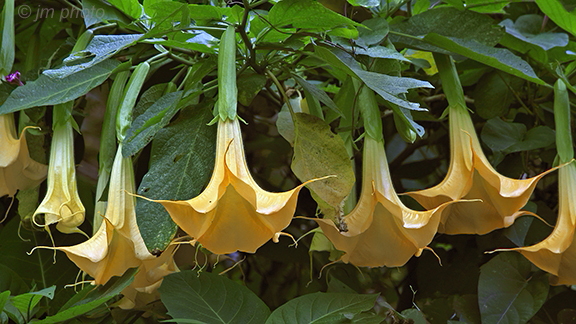She walked to the edge of their courtyard overgrown by a tree, some bushes and an army of her flowering plants.
"Look." She was pointing at some dead branches no more than some two meters above the ground.
"Huh?" I saw nothing special there.
"Don't you see them?"
"See whom?"
"Look!!!" pushing away some branches and dead plants she made her way closer to the tree. "See?"
"What ...are they ... bees?!"
They were tiny.
Some were crawling out of what seemed to be a short tunnel, sat on the edge as if unsure of what to do first, then "jumped" into the space in front of them and whizzed away.
Others were coming in, carrying yellow pollen on their legs. Some missed and landed a bit sideways only to try one more time to make it home.
And there was a group that never went anywhere. Lazy or what?
And all of them seemed to be slower and clumsier than their big bee cousins.
The spiders must have known that too because there were many spiderwebs strung about and in all directions.
"What are they?" The bees were about a third of what I would ever imagine a bee to be.
"They are honey bees," she said matter-of-factly.
"What? H-o-n-e-y bees?"
She stepped even closer to the tunnel. "Come here, don't worry, they don't sting. Just make sure not to disturb them."
Stingless bees?
"Yes, the ancient Mayan bees," she said with pride in her voice. "They were sacred to Maya."
"How did you acquire them?" It was a silly question.
"Well, they just seem to have found us. And that hollow log here. Maybe because we do not chop down the trees. Enjoy."
And with that she left to take care of other things.

It was a bit difficult to get close to the bee log and the bees were not really into posing for photos either. And on the top of everything the dogs kept me a lively company making sure that I would not feel too lonely. They cheerfully ignored my pleas for their departure. It must have been my Spanish pronunciation (or the lack of).
 As the days went by, the bees kept on adding more and more waxy material to the outer edge of the tunnel.
As the days went by, the bees kept on adding more and more waxy material to the outer edge of the tunnel.Eventually they made an enclosure.
Tisha said, that they would do it whenever the weather turned foul (as it surely did in those December days).
And by the end of the third week there was also an addition on the top of the branch.
For what you must ask the experts; we did not want to disturb the bees to investigate any further.Why?
Because the Stingless Mayan Bees are already disappearing (like most of our Nature).
The home buddies are welcome.
They used to be regarded as sacred by the Maya and the story has it that when a beekeeper died, the hive was buried with him so his bees would accompany him in the afterlife.
Unfortunately, just like everything else these days, due to deforestation, the tiny honey makers of the Mesoamerica are in trouble. Also, the human desire to produce more for less makes the situation even worse. The peaceful stingless bees are being replaced by their larger, faster, more active cousin: the honey bee. Respect for the little ones is diminishing.
But the large bees are unable to pollinate many native plants (orchids or some trees). And as we know (or should know) "everything is connected to anything else", so when the little bees go, the orchids, the trees and who-knows-what will follow.
Brave new world will ensue!
 |
| Masses of the small but numerous orchids sprung up in December on one of the trees in Tisha's garden. |
In case that you are interested to learn more, visit the following foodscaping blog. It will take you to Tulum, MX and explain a whole lot more about the stingless meliponines as they are called. There are many species belonging to this group and they can be found warm climates all over the world.
But only 2 species, Melipona beecheii and M. yucatanica are native to Central America.
And they are disappearing fast.


























































